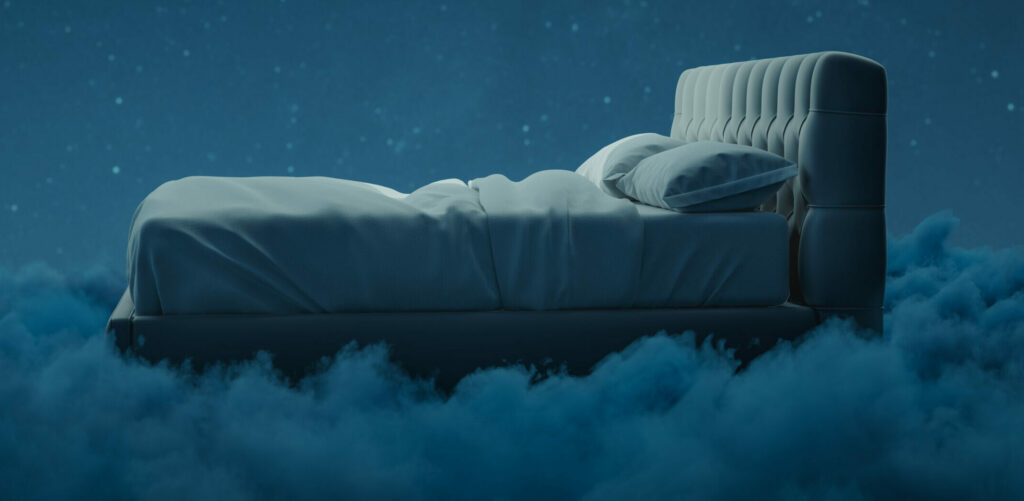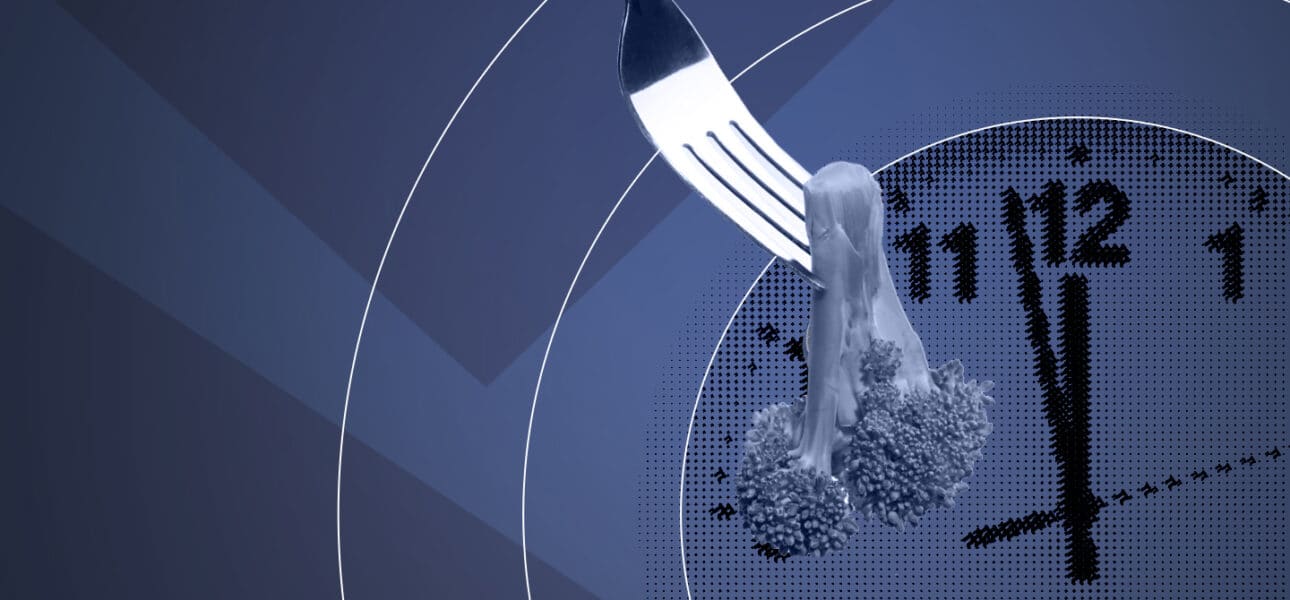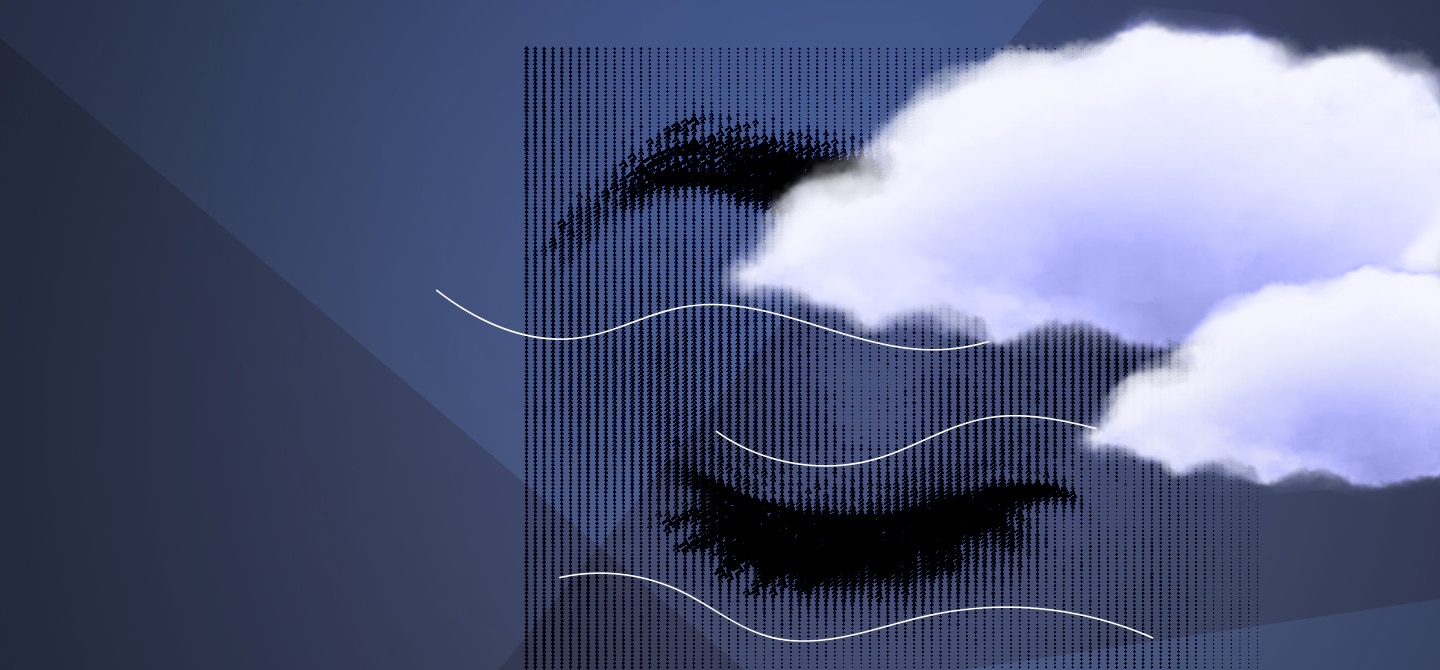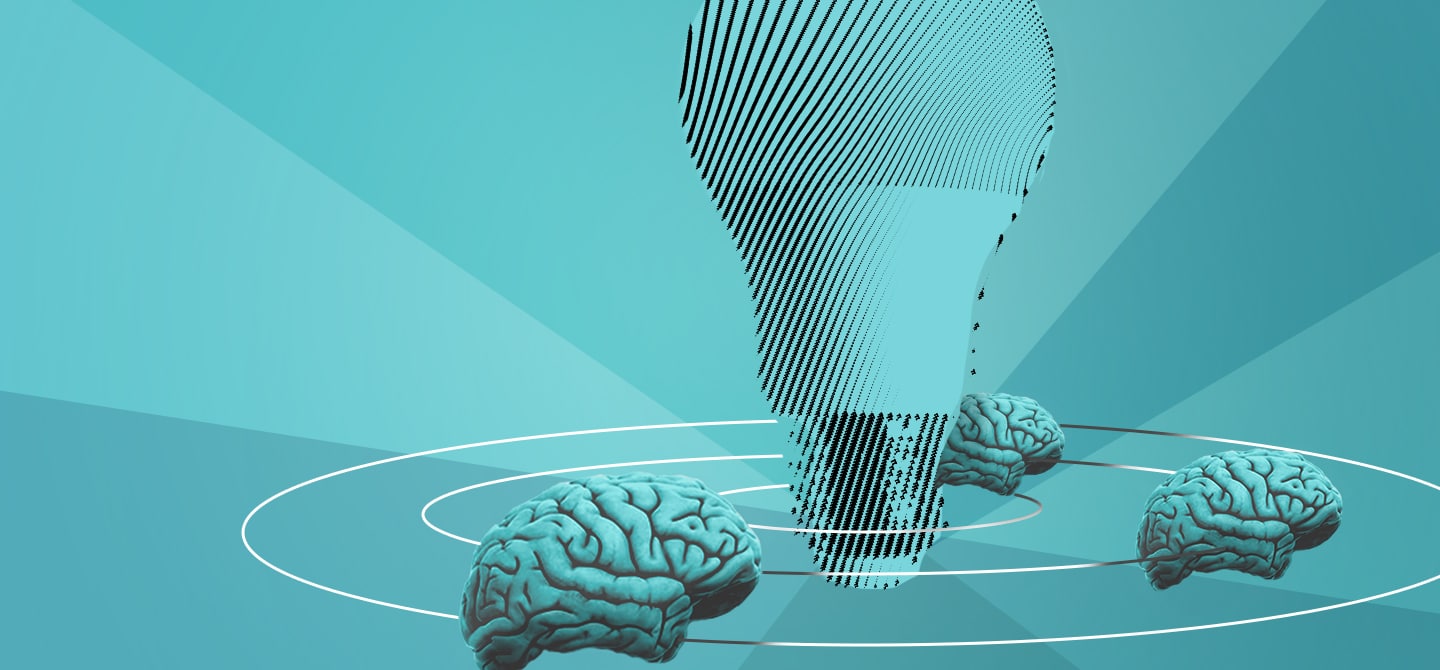Doctors recommend an average of 7 to 9 hours sleep for adults. Yet in France, we struggle to reach the lower end of this range. What can we do to try and improve our night’s sleep? Let’s take a look at some recent scientific findings.
We are sleeping less and less. The annual survey by the Institut national du sommeil et de la vigilance1 reveals that in 2024, the French will sleep an average of 6 hours 42 minutes during the week and 7 hours 25 minutes at weekends, i.e. 15 minutes less a day than in 2023. Although this downward trend has accelerated in recent years, it is not a recent phenomenon: we are thought to have lost 1 and a half hours of sleep a day over the last 50 years. However, the same survey shows that we are aware that adopting a healthy lifestyle helps us to get a better quality of sleep. And in fact, correcting our habits is the first step recommended by doctors and medical associations in treating sleep disorders, before considering any kind of medication.
Some sleep basics
To understand the impact of a healthy lifestyle on our nights, it helps to look at the biological mechanisms that govern sleep. There are two factors that regulate the duration, timing, and quality of sleep: sleep pressure and the body clock. The first involves so-called homeostatic processes, which work like an hourglass that is turned over when we wake up. Adenosine plays a central role here: produced during the waking phases, this product of ATP breakdown (the cells’ main source of energy) accumulates throughout the day until it reduces neuronal excitability and induces sleep.

Our body also has a “central clock” located in the hypothalamus, directly linked to sleep structures. Thanks to this clock, the pineal gland (an endocrine gland in the shape of a pinecone – hence its name – located at the heart of the brain, which plays a central role in regulating biological rhythms) secretes melatonin – also known as the “sleep hormone” – at the end of the day, when the light fades, which helps us to fall asleep. During the waking phases, the same clock inhibits melatonin production and prompts the adrenal glands to secrete a hormone with the opposite effect, cortisol. It stimulates gluconeogenesis to maintain blood glucose levels and supply energy to the cells. Like a conductor of an orchestra, our internal clock also regulates body temperature and synchronises multiple peripheral clocks governing various biological functions such as appetite rhythms or intestinal contractions. The central clock is itself constantly reset to the day/night cycle by external synchronisers: mainly light, but also (with more modest influences) physical activity, mealtimes, social interactions, and outside temperature.
This is how our body clock defines the windows of sleep when sleep quality is best. To reinforce this, it is essential to maintain regular bedtimes and wake-up times and to listen for the first signs of sleepiness. But other strategies can also be put in place.
#1 Monitor light exposure
Doctors recommend exposing oneself to “blue sky” first thing in the morning, in order to stimulate cortisol production and inhibit melatonin production. Synchronisation with light involves activating the photoreceptors in our retina, the melanopsin cells, which are more specifically sensitive to blue light. Contemplating the clouds through your office or flat window won’t be enough. This is because light levels rarely exceed a few hundred lux, whereas the standard recommendations are 10,000 lux (equivalent to the illumination of a shaded area in summer) for at least half an hour. On the other hand, and again to help our clocks work in sync, it’s very important to dim the lights and avoid looking at screens in the evening (studies suggest 30 minutes to 2 hours before bedtime), as they emit light that is rich in blue.
A recent study conducted by Inserm, the results of which have been published in the Journal of Pineal Research, refined these recommendations2. Using two separate groups of volunteers, with an average age of 25 and 59, the study looked at melatonin production following exposure to different colours. It appears that while melanopsin is the only photoreceptor involved in inhibiting production of the hormone in young subjects, in older subjects other photoreceptors, sensitive to different colours, also come into play. This mechanism is thought to be an adaptation to the browning of the crystalline lens that occurs with age, which reduces the amount of light reaching the retina. These results therefore suggest that the elderly would particularly benefit from daily exposure to daylight, which is richer in wavelengths than artificial light. The researchers also recommend adapting the colour and brightness of indoor lighting if going out is impractical.
#2 Exercise
The scientific literature is full of consistent evidence of a positive correlation between physical activity and better sleep. This corpus includes two studies published in 2024, one by the University of Reykjavik3, the other by the University of South Australia4. In the Icelandic study, 4,339 participants from 9 European countries aged between 39 and 67 were monitored over a 10-year period. Levels of physical activity, duration of sleep and sleep disorders were assessed using questionnaires. Conclusion: people who maintained regular physical activity over the study period reported fewer problems falling asleep or extreme sleep durations (less than 6 hours or more than 9 hours) than the most sedentary subjects. The Australian study, based on an assessment of the activity parameters of a population of 1,168 children and 1,360 adults, over 8 days and 24/24, shows that moderate to vigorous physical activity during the day is correlated with longer, better quality sleep. The researchers believe that this effect is due to an increased secretion of serotonin, which helps to improve both mood and the production of melatonin.
Other studies also suggest that, where possible, regular practice times should be observed, avoiding those before bedtime. A study conducted by the University of Caen-Normandie and published in 20245 may qualify this recommendation. Carried out on 16 young adults in good health, it suggests that 30 minutes of moderate physical activity, one hour before bedtime, has, in this population at least, only a very minimal impact on sleep efficiency. But more research is needed to confirm these results.
#3 Eat a good dinner
It’s generally accepted that it’s a good idea to avoid drinks containing caffeine in the evening. Why? Because caffeine binds to the same receptors as adenosine, delaying the feeling of tiredness. As for the contents of your plate, a study conducted by the team led by Armelle Rancillac, a researcher at Inserm and the Collège de France, showed that a glucose-rich dinner favoured sleep6. The researcher is interested in glial cells, which are more numerous than neurons and essential to their functioning. Her work focuses more specifically on astrocytes, so named because of their star shape. His research has shown that these cells, which capture blood glucose, can induce a release of adenosine that varies according to the time of day. Astrocytes take account of the time of day to adapt their response to the same increase in glucose. This response is greater in the evening than in the morning, to encourage sleep at the end of the day.








